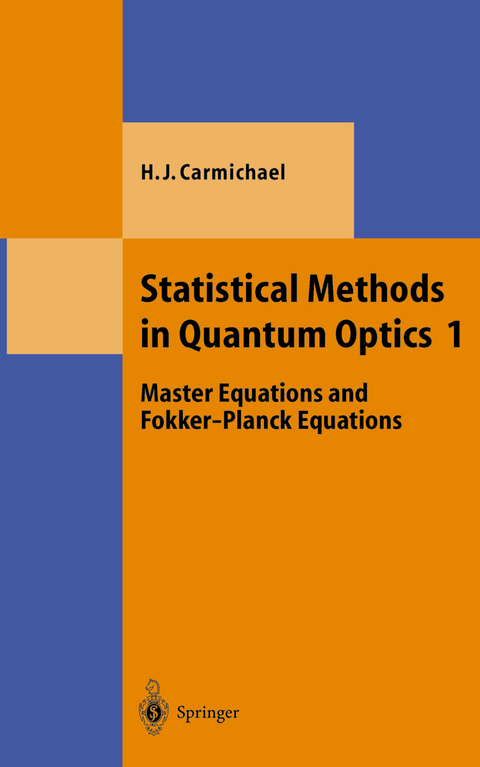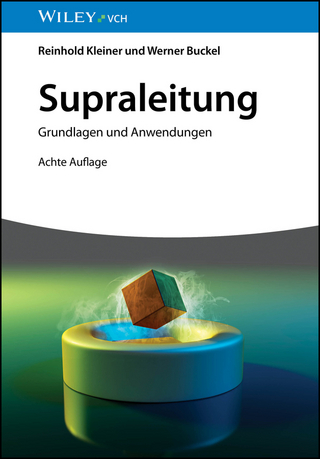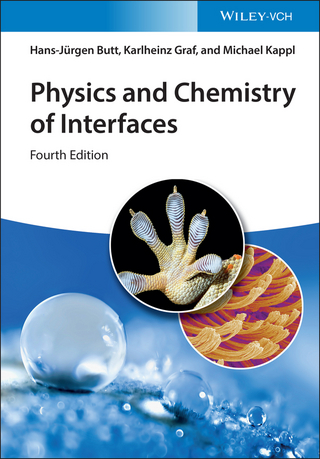
Statistical Methods in Quantum Optics 1
Springer Berlin (Verlag)
978-3-540-54882-9 (ISBN)
As a graduate student working in quantum optics I encountered the question that might be taken as the theme of this book. The question definitely arose at that time though it was not yet very clearly defined; there was simply some deep irritation caused by the work I was doing, something quite fundamental I did not understand. Of course, so many things are not understood when one is a graduate student. However, my nagging question was not a technical issue, not merely a mathematical concept that was difficult to grasp. It was a sense that certain elementary notions that are accepted as starting points for work in quantum optics somehow had no fundamental foundation, no identifiable root. My inclination was to mine physics vertically, and here was a subject whose tunnels were dug horizontally. There were branches, certainly, going up and going down. Nonetheless, something major in the downwards direction was missing-at least in my understanding; no doubt others understood the connections downwards very well. In retrospect I can identify the irritation. Quantum optics deals primarily with dynamics, quantum dynamics, and in doing so makes extensive use of words like "quantum fluctuations" and "quantum noise. " The words seem harmless enough. Surely the ideas behind them are quite clear; after all, quantum mechanics is a statistical theory, and in its dynamical aspects it is therefore a theory of fluctuations. But there was my problem. Nothing in Schrodinger's equation fluctuates.
1. Dissipation in Quantum Mechanics: The Master Equation Approach.- 2. Two-Level Atoms and Spontaneous Emission.- 3. Quantum-Classical Correspondence for the Electromagnetic Field I: The Glauber-Sudarshan P Representation.- 4. Quantum-Classical Correspondence for the Electromagnetic Field II: P, Q, and Wigner Representations.- 5. Fokker-Planck Equations and Stochastic Differential Equations.- 6. Quantum-Classical Correspondence for Two-Level Atoms.- 7. The Single-Mode Homogeneously Broadened Laser I: Preliminaries.- 8. The Single-Mode Homogeneously Broadened Laser II: Phase-Space Analysis.- References.
From the reviews
"To sum up: Statistical Methods in Quantum Optics 1 is an excellent book. Try it, you'll like it!" (M.O. Scully, Physics Today, 2000)
"The book is carefully written, in considerable detail, paying attention to both foundations and applications. It contains exercices completing or generalizing the material presented, and ample references to the literature. It is, therefore, very useful as the basis for a course." (V.R. Vieira, Mathematical Reviews, 2000f)
PHYSICS TODAY
"...a valuable addition to the literature...an excellent book. Try it, you'll like it!"
"It is a pleasure to recommend this title thoroughly for both individual and institutional purchase." (D. L. Andrews (University of Anglia), Contemporary Physics 2002, vol. 43, page 232-233)
| Erscheint lt. Verlag | 18.11.1998 |
|---|---|
| Reihe/Serie | Theoretical and Mathematical Physics |
| Zusatzinfo | XXI, 361 p. |
| Verlagsort | Berlin |
| Sprache | englisch |
| Maße | 155 x 235 mm |
| Gewicht | 704 g |
| Themenwelt | Naturwissenschaften ► Physik / Astronomie ► Atom- / Kern- / Molekularphysik |
| Naturwissenschaften ► Physik / Astronomie ► Hochenergiephysik / Teilchenphysik | |
| Naturwissenschaften ► Physik / Astronomie ► Quantenphysik | |
| Naturwissenschaften ► Physik / Astronomie ► Theoretische Physik | |
| Technik ► Elektrotechnik / Energietechnik | |
| Schlagworte | Equation • Fokker-Planck • Laser Physics • Master Equation • Optics • Quantenoptik • Quantenstatistik • Quantum Fluctuations • quantum mechanics • Quantum Optics • Resonance Fluorescence • Theorie |
| ISBN-10 | 3-540-54882-3 / 3540548823 |
| ISBN-13 | 978-3-540-54882-9 / 9783540548829 |
| Zustand | Neuware |
| Informationen gemäß Produktsicherheitsverordnung (GPSR) | |
| Haben Sie eine Frage zum Produkt? |
aus dem Bereich


